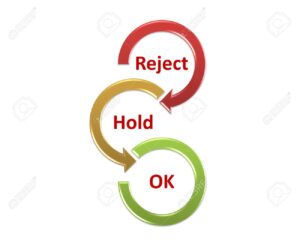Quality Management System – ISO 9001 Understanding Made Easy
Defines 7 principles in QMS- ISO 9001
Quality Management System – ISO 9001 series are based on seven quality management principles (QMP) The seven QMP in quality management system – ISO 9001 are:
https://shivconsultancy.org.in/quality-management-system-in-business/
Principle 1 – Customer focus
Organizations depend on their customers and therefore should understand current and future customer needs, should meet customer requirements and strive to exceed customer expectations.
Before making the planning for Production or providing a service to the customer need to think first that is this okay for the Customer? While Business is established for the fulfilling the requirements of the Customer, therefore all focus should be on the fulfilling the requirements of the Customer. What is the requirement and what they expect from us is very important to understand to get the satisfaction from the customer even get the real satisfaction to the Organization. This is the key of success.
Amazon, OYO, Jio Mobile, OLA Cabs and Auto are the latest examples how these Organizations are getting success in their business because of the understanding the requirements of the peoples and reaching to fulfilling them. Satisfaction of the Customer will by default increase the business. In the Quality Management System this is the 1st principle which is the mandatory requirement of the standard which is giving clear picture of the satisfaction level of the Customer and forecasting of the sales growth.
Principle 2 – Leadership
Leaders establish unity of purpose and direction of the organization. They should create and maintain the internal environment in which people can become fully involved in achieving the organization’s objectives.
Peter Drucker: “The only definition of a leader is someone who has followers.“
What is leadership? A simple definition is that leadership is the art of motivating a group of people to act toward achieving a common goal. In a business setting, this can mean directing workers and colleagues with a strategy to meet the company’s needs.
Leadership, however, requires traits that extend beyond management duties. To be effective, a leader certainly has to manage the resources at their disposal. But leadership also involves communicating, inspiring and supervising.
In India there are great historic leaders which are the greatest examples of the Leadership. System cannot run without leadership qualities to get the effectiveness of the implementation. This is the 2nd principle of the Quality Management System which is giving encouragement to employees and good results to the Organization.
Principle 3 – Engagement of people
People at all levels are the essence of an organization and their full involvement enables their abilities to be used for the organization’s benefit.
For engaging the peoples need to identify their qualities, potentials to get benefits of their work. Need to encourage them, provide personnel trainings to improve their performance.
When people can actually engaged in the activity? When they will get appreciation for their good work, when they feel that it is really helping to improve their development, really Organization is doing well and need to make them responsible for their performance. Trustworthy relationship between Organization and peoples can give the satisfaction to all. Ashtapradhan Mandal of the Great Indian King Shivaji Maharaj can be one of the examples of this. In the Quality Management System this is the 3rd principle which sticks to define competency of the particular designation and monitor the same periodically to increase the involvement and engagement of the peoples.

Principle 4 – Process approach
A desired result is achieved more efficiently when activities and related resources are managed as a process.
Input (Requirement) → Process → Output (Desired Result)
Function wise inputs → Procedures (Preparation / Inspection of the Product / Ready to Dispatch) → Output (Dispatch)
Marketing / Store / Purchase / Quality Checking / Production / Maintenance / Sales all activities has to be covered in the cycle and make a planning to achieve the desired result.
Kitchen is the best example of the Process Approach. Requirement of the food is the input of this process. Then process journey begins and Output is the Ready Food and satisfaction of the family members after they have having it.
Kitchen is the best example of the Process Approach. Requirement of the food is the input of this process. Then process journey begins and Output is the Ready Food and satisfaction of the family members after they have having it.
This is the 4th principle of the Quality Management System to get the desired results in each order. This is focusing to make the procedures of the each activity and inspections of the product to monitor the effectiveness of implemented system.
Principle 5 – Improvement
Improvement of the organization’s overall performance should be a permanent objective of the organization.
Many theories and practices exist with respect to improvement in business.
Performance Improvements, Process Improvement, Quality Improvement, Product Improvement this are four aspects of the continual improvement. Without improvement nobody can measure the effectiveness of the implemented system. It can be done the analysis of previous activities results and current activities results of the implementation. Therefore this is the important principle in the Quality Management System.
Principle 6 – Evidence-based decision making
Effective decisions are based on the analysis of data and information.
Verbal decision cannot give effectiveness of the system, even could not checked results. It could not work long life because it can be changed anytime. Therefore to get the effectiveness of the system evidence is very important to verify the authentication of the information. Government operations, banking operations are the best example of this principle.
Principle 7 – Relationship management
An organization and its external providers (suppliers, contractors, and service providers) are interdependent and a mutually beneficial relationship enhances the ability of both to create value.
Relationship management is a strategy in which an organization maintains an ongoing level of engagement with its audience. This management can occur between a business and its customers (Business to Consumer B2C).
Employee Relationship Management or ERM is the process of managing relationships in an organization. These relationships can be between the organization and employees as well as coworkers working at the same level. For employees to be productive, they need to have a working environment that allows them to be creative.
In India we can give examples of Mr. Ratan Tata and Reliance Group of Industries who’s maintaining the relationship will their Customers, Suppliers and employees who’s responsible for the increase the business even responsible for their success.

Click Link below: To Watch Video for further learning on QMS 7 Principles
https://www.youtube.com/watch?v=Lidft4YicaU
Shiv Consultancy have been certified more than 200+ Business Organizations for various ISO standards by providing management consultancy services and providing personnel trainings to all employees.
Can contact us for consultancy, trainings and supplier audit services on our given contact details.

www.shivconsultancy.org.in

info@shivconsultancy.org.in

+919594799807 / 7218963881

Click to Buy -> Unfolding Success
Likely to change your life






















